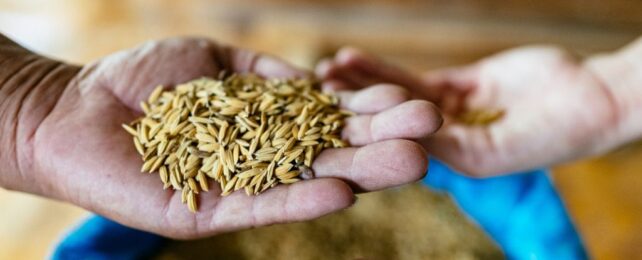A study based on a deadly famine that claimed the lives of millions of Ukrainians in the early 1930s has revealed the long-term impact of malnourishment on a developing fetus.
The tragic history is remembered by Ukrainians as the Holodomor, which means death by hunger. Food supplies in 1932 and 1933 were deliberately cut off by the Soviet Union, leading to various degrees of malnutrition across the Ukraine's provinces.
Now, an analysis of Ukraine's national diabetes registry has found that survivors who were in early pregnancy in the peak of the Holodomor within the worst affected provinces were more than twice as likely to give birth to a child who would later go on to develop type II diabetes, compared with those pregnant outside of the famine.
These diagnoses occurred between four and seven decades after the famine.
"The findings … point to potential long-term public health consequences of the current Russia-Ukraine war," write Austrian physicists Peter Klimek and Stefan Thurner, who were not involved in the current study.
The United Nations World Food Program estimates that in 2023, about 11 million Ukrainians were at risk of hunger. That same year, 187,000 children were born.
If today's famine has the same intergenerational impact on developing fetuses as the Holodomor, Klimek and Thurner calculate 19,000 more people may be impacted by diabetes in decades to come.
Other studies on the Holodomor have found that type II diabetes is 1.5 times more common in men and women who live in areas that suffered severe famine, historically.
But this new analysis investigates how malnourishment during pregnancy and in early childhood impacts the long-term health outcomes of the next generation, nationwide.
The team of researchers, led by epidemiologist LH Lumey of Columbia University, compared birth data from 1930 to 1938 in all but one Ukrainian province, using the national diabetes registry from 2000 to 2008.
Their final study population included over 10 million Soviet Ukraine births in the years 1930 to 1938.
Nearly 15 percent were born in regions with extreme famine, and nearly 40 percent were born in regions with famine catagorized as 'very severe'.
In the end, Lumey and his colleagues noted a "more than twofold increase in the odds of developing [type II diabetes mellitus] in later life among individuals born in Ukrainian provinces exposed to famine in early 1934."
These births would have been conceived in the six-month period in 1933 when the Ukrainian famine was at its worst, claiming an estimated 28,000 lives per day. In fact, more than 80 percent of all deaths attributed to the Holodomor occurred in the first seven months of 1933.
Compared to research on historical famines in China, the recent study found that only individuals who were in their mother's womb during the Ukrainian famine were at an increased risk of developing type II diabetes later in life.
Infants exposed to the Ukraine famine in mid or late gestation or very early in life did not face the same risks.
"Our analysis of famine studies from China showed that it was common for adverse health outcomes in middle age to be attributed to famine exposure in early life," write Lumey and colleagues.
But these estimates lumped children of all ages together, and as the authors explain, it could be that only in the early stages of development is malnourishment a risk for metabolic disease.
"Although the likelihood of being diagnosed with [type II diabetes] depends on many factors, exposure to famine in this setting appears to be the dominant factor that overrides all others," conclude Lumey and his colleagues.
The study was published in Science.
